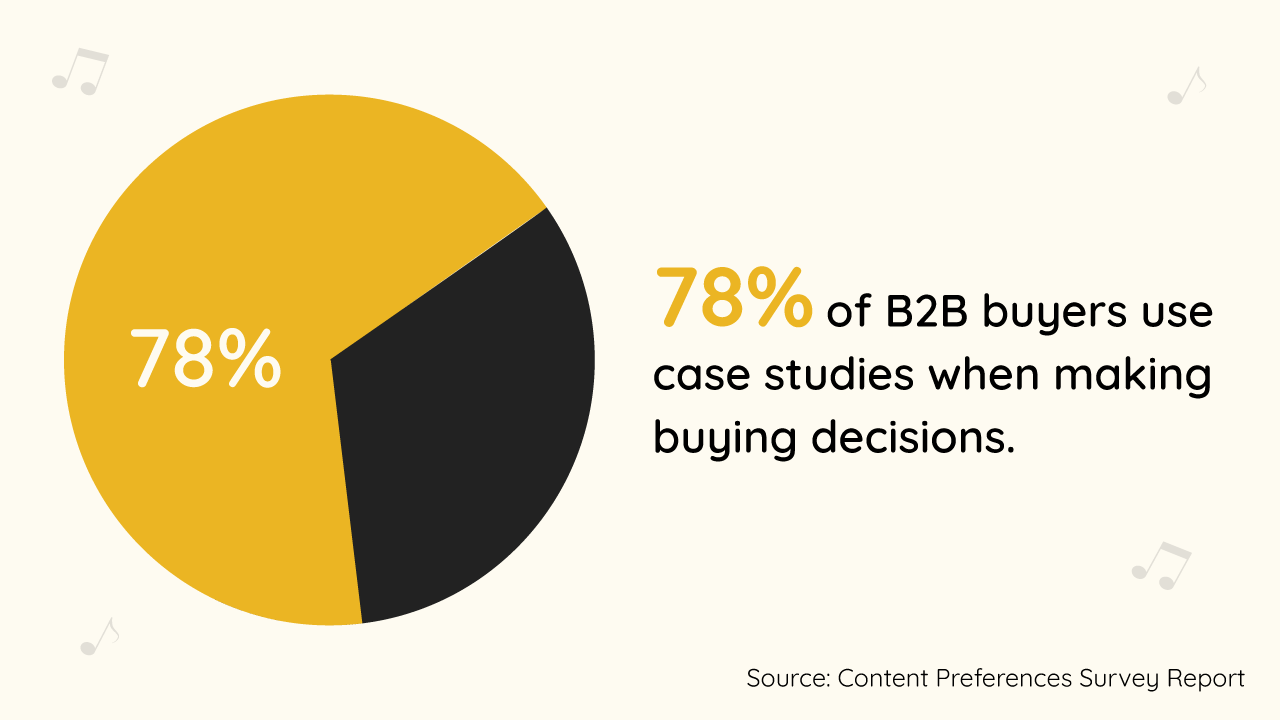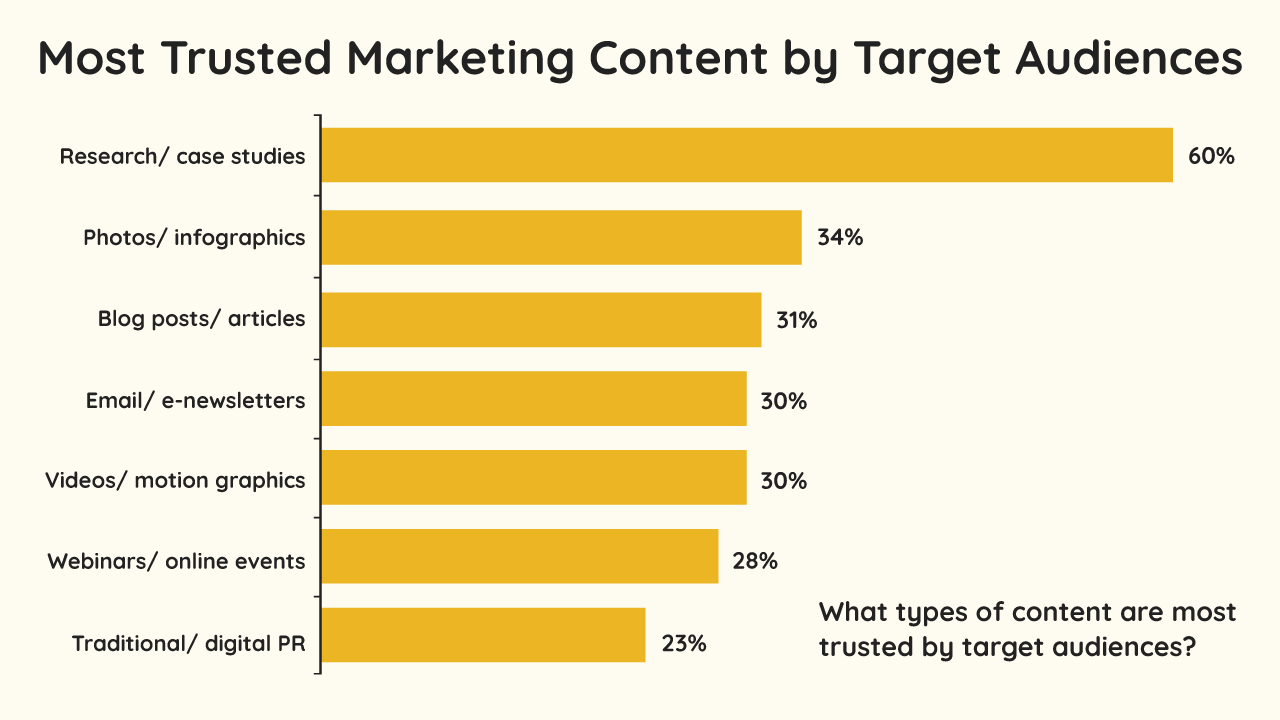B2B case studies can be a powerful lead-generation tool. And when shared through a branded podcast (i.e., podcast case study), they can be even better. Using case studies as episodes to educate your podcast listeners about your products/services could supercharge your lead-generation efforts authentically. (B2B Case Studies + Podcasts = 
Why?
Because social proof is a potent driving force behind purchase decisions. Whether we realize it or not, humans are social animals. We move as a pack. Our decisions and actions are subconsciously or consciously swayed by the choices and actions of those around us.
Think about it:
If there were two hotdog carts, one with a few people in line and the other empty, which would you choose? Most people would be inclined to pick the cart with others in the queue. Why? Because there must be a reason one cart is empty and the other has customers. So rather than spend time and effort scrutinizing each option, you simply rely on social proof.
“We view a behavior as more correct in a given situation to the degree that we see others performing it. Whether the question is what to do with an empty popcorn box in a movie theater, how fast to drive on a certain stretch of highway, or how to eat the chicken at a dinner party, the actions of those around us will be important in defining the answer.”
― Robert B. Cialdini, Influence: The Psychology of Persuasion
A B2B marketing case study is an excellent way to tap into the power of social proof. It gives buyers context to determine whether they’re making the right choice. But why podcast case studies? What is so great about sharing your business case studies via B2B podcasting?
Well, a podcast is a great storytelling platform for effectively communicating your message. Podcasting is an intimate medium that can capture emotional nuances for a stronger connection. It’s also convenient to consume, and it feels authentic.
In other words, case studies and podcasting are a match made in heaven—a dynamic duo that could supercharge your lead generation efforts.
We believe that every business trying to generate leads should look into creating a B2B case study and sharing it via a podcast. And this lesson of the “Podcasting Mastered” course will break down everything you need to know about creating an impactful podcast case study.
This post is the 22nd in a series of “Podcasting Mastered” chapters designed to help you launch and grow an enterprise lead-generating podcast.
There has never been a better time to make your voice heard – and we’re here to help master the art of podcasting with step-by-step guides.
Get the new chapters sent directly to your inbox, as soon as they release.
We follow strict no-spam policy. Your information will not be sold.
What is a B2B Marketing Case Study?
A B2B case study is a marketing tool that tells the story of how a customer experienced quantifiable benefits from using your products or services.
Most business case study examples describe and evaluate the different problems a customer faces—and how working with your business helped them successfully overcome those challenges.
This gives buyers a form of social proof that your business could solve their challenges. Case studies build rapport with your audience and establish your brand as a trusted leader that would be an ideal choice for prospects.
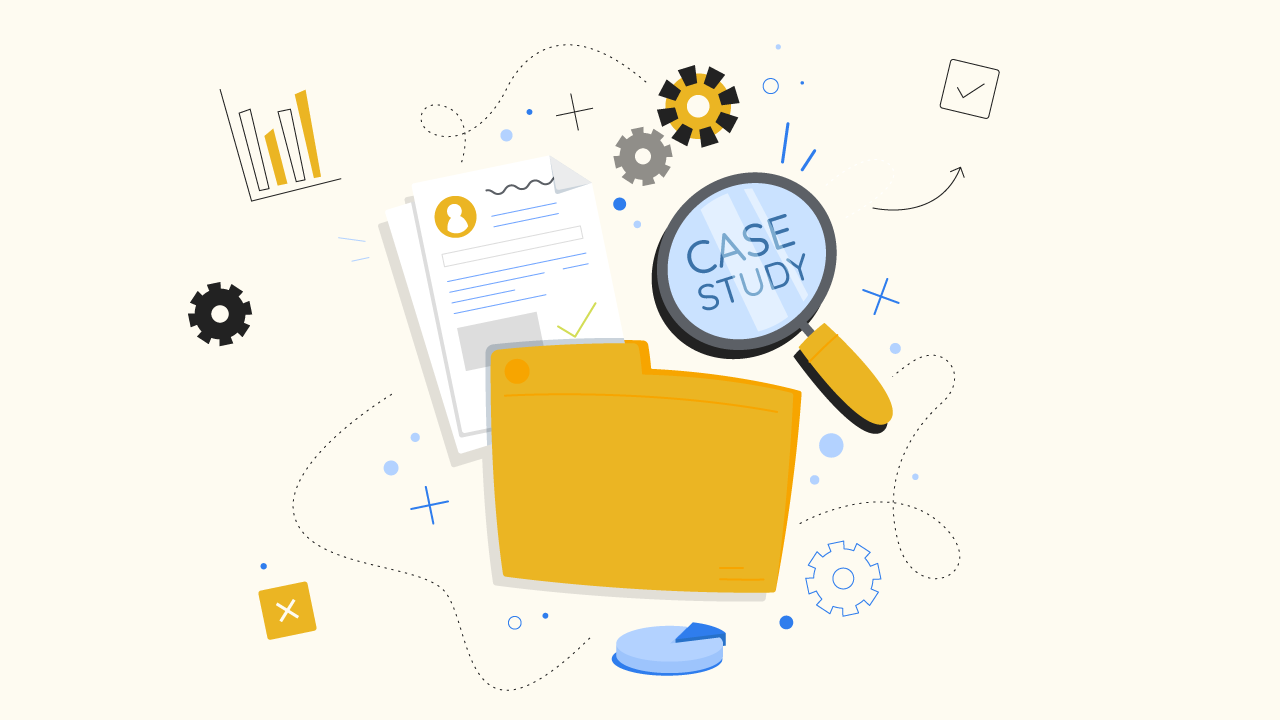
However, it is also important to understand what B2B case studies are NOT.
- A case study is not an advertisement. So use facts over rosy marketing content.
- It is not a press release to describe your products or services.
- And it’s definitely not about your company! The customer is the star of the narrative.
Why a B2B Case Study is a Valuable Marketing Tool?
A B2B marketing case study is an incredibly effective way to generate leads and generate conversions. It acts as proof to simplify and validate customers’ buying decisions. It helps grow brand awareness, establish credibility, and build trust. A business case study is a crucial content strategy to engage your target audience through storytelling.
Maybe your business is keen on creating B2B case studies, or maybe it’s not in your plans. Regardless, one thing’s certain: they’re effective in driving conversions. So much so that 78% of B2B buyers rely on case studies to guide their buying decisions.
But why? What is it about case studies that makes them such a powerful marketing tool?
Here are some of the top benefits of case studies for your business:
1. B2B Case Studies Provide Proof.
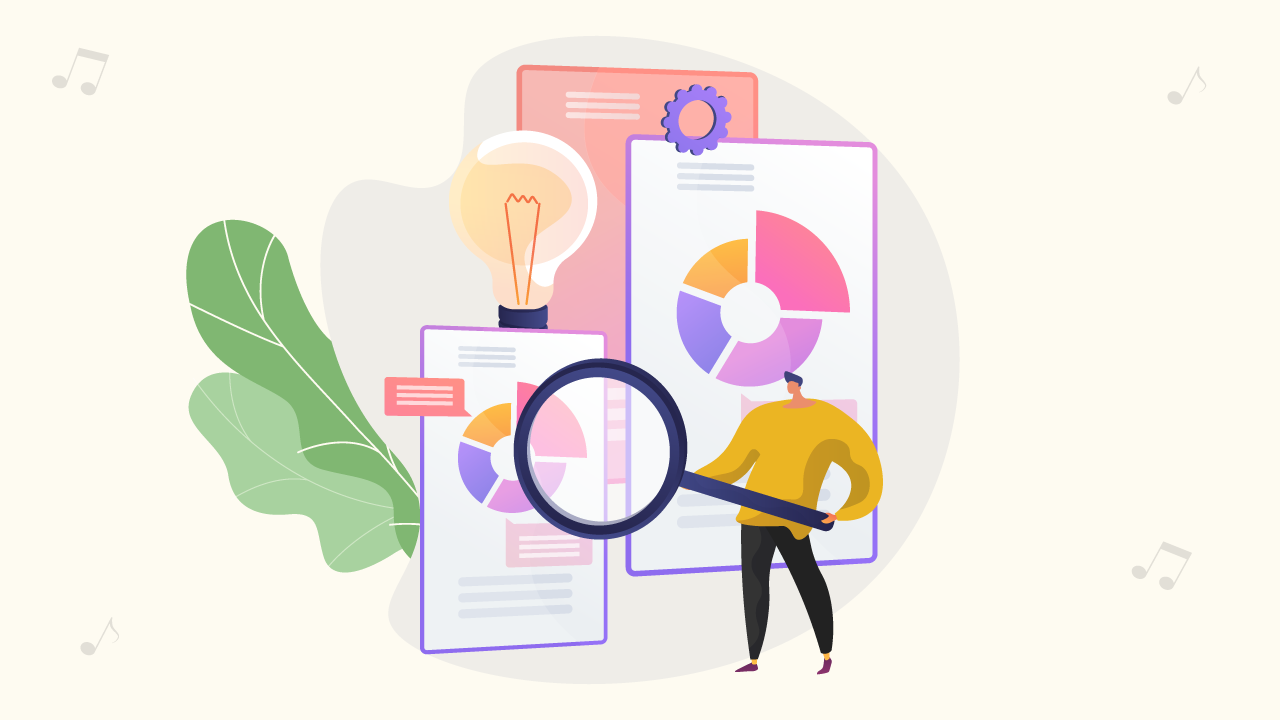
So, your business claims to do this and that for its clients. You claim and believe you’re the best at what you do. But why should prospects believe you?
Your marketing message can sound far-fetched without explaining the details and laying down the indisputable data behind how you achieve whatever you’re promising with your service offering. And even if it’s believable, your audience might not relate.
A B2B case study is mainly about providing proof. It details how you benefited another client and the steps you took to get to that solution. This drives home the reality of your offer—making you believable. And with proof comes better odds to seal the deal.
2. A B2B Marketing Case Study Fosters Trusts.

As highlighted earlier, most people (92%) tend to trust and pay attention to peer recommendations. There’s a reason you are more inclined to visit a certain restaurant based on a loved one’s positive experience.
A well-crafted B2B case study brings your product or service to life. It taps into the compelling power of storytelling to persuade your target audience. Sharing stories of successful relationships with other customers shows that you live up to your promises. This creates a strong emotional impression. And with the addition of tangible data, B2B case studies position you as a trustworthy and credible business partner.
It makes sense that around 6 in 10 marketers claim that case studies are their most trusted content type—and it’s easy to see why.
3. Building Brand Awareness.

Did you know that 94% of buyers use online resources to find and evaluate solutions to their problems—rather than talk to a salesperson?
This makes B2B case studies an invaluable resource for empowering prospects with in-depth information that answers their questions and solves their problem in a relatable way. They show how someone with similar issues and questions found their answers.
Case studies help prospects make the best decisions—while putting your company’s name out there. It’s also free publicity for your B2B clients. Featuring them in your case studies gives them free exposure. And who wouldn’t want that? It’s a win-win for all parties involved.
Now that you know why a good B2B case study is essential let’s get into why you should consider sharing them through a podcast. We firmly believe that a podcast case study is a hidden gem in the content marketing world.
Benefits of a Podcast Case Study:
A podcast case study can offer potent content marketing firepower for your business. It is an ideal way to speak to prospects and highlight how you can address their needs. Podcast case studies help businesses engage with customers emotionally in a growing medium that is convenient to consume.
1. A Podcast Case Study is Intimate – Emotional Appeal.
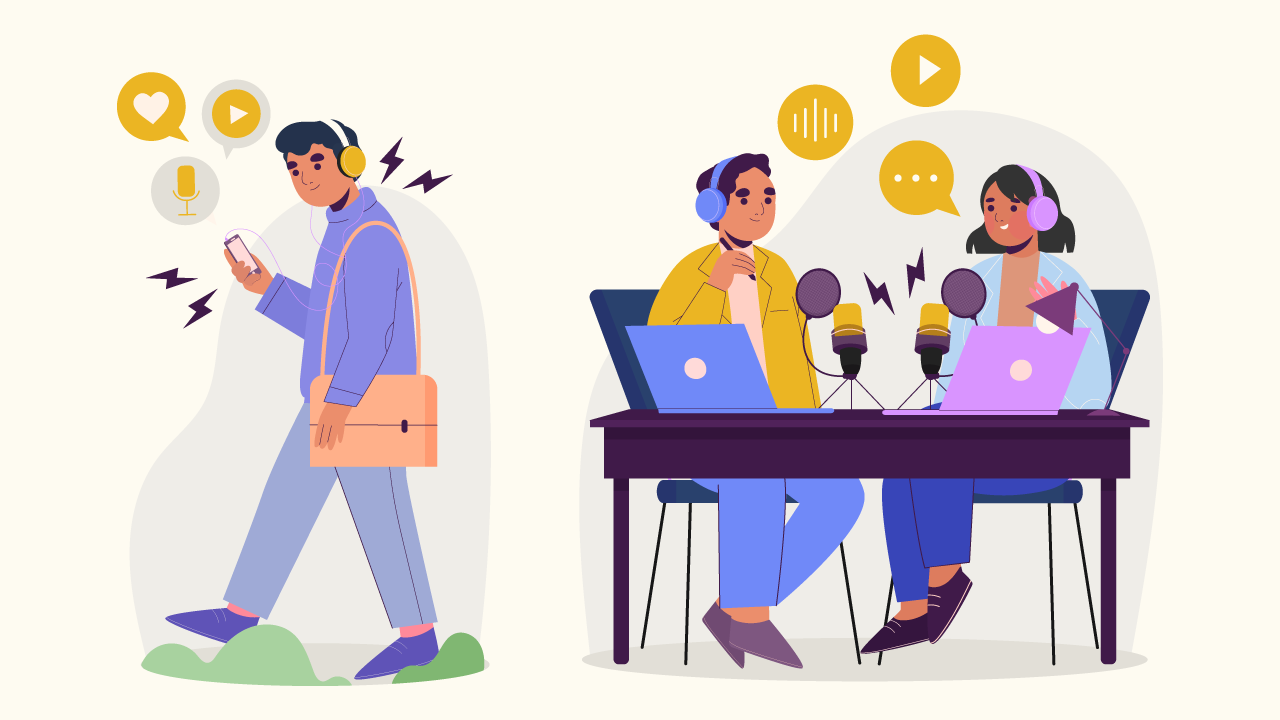
Reading a case study is one thing. But hearing it carries nuances that play a significant role in driving the point home. Prospects get an opportunity to hear the emotion in your voice—as if you were speaking directly to them.
Statistics are great, and they play an important role in your case studies—but it’s easier to relate to another human’s voice. So why not combine both through a podcast case study?
A podcast case study packs emotional appeal into your logical data, creating a more convincing and compelling narrative. It humanizes your story. It makes it easier for prospects to relate to your content.
2. Wider Distribution.
Podcasting is a growing medium! You must have noticed that shows are popping everywhere. Around 226 million (80%) people in the U.S. are familiar with a podcast—and the number keeps growing.
Each month, 41% of Americans give you their attention and invite you to their ears. This is a perfect opportunity to showcase your work by speaking directly to a growing audience of podcast listeners.
Plus, you can embed a podcast case study directly on your business website, publish it on YouTube, or share it on social media. This gives you access to different audiences, which can only be good news for your business goals.
3. A Podcast Case Study is Convenient to Consume.
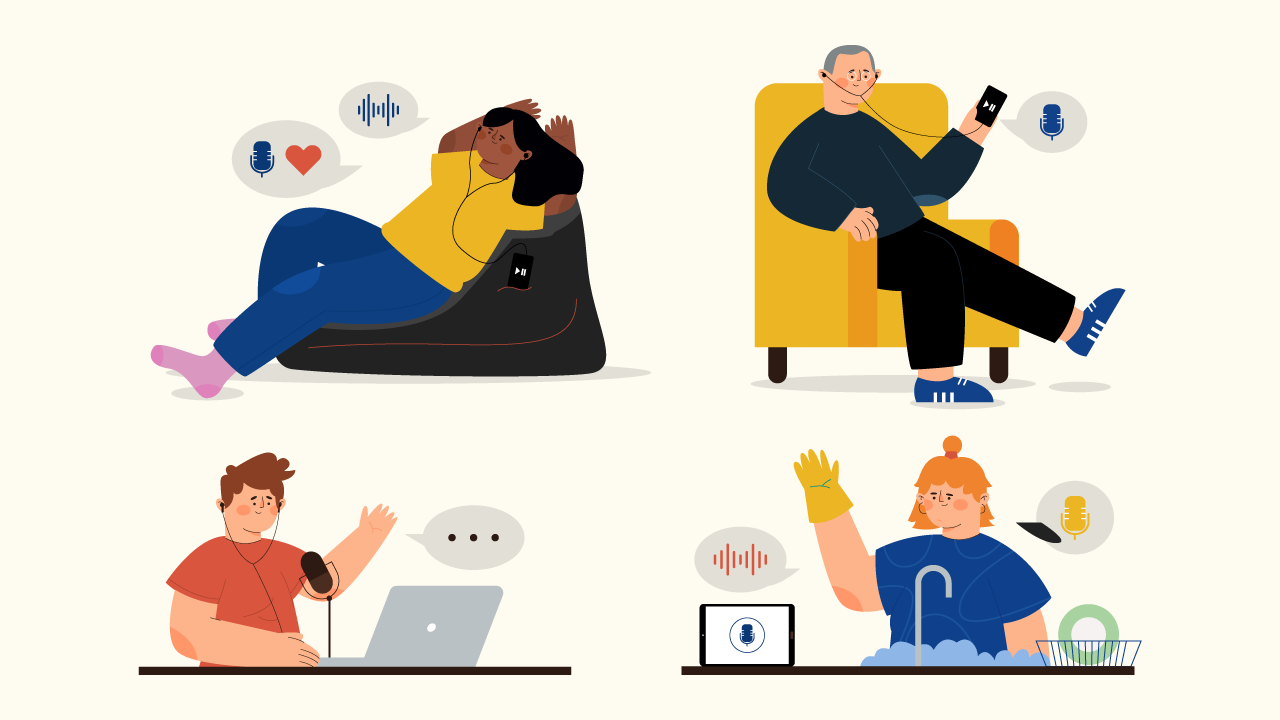
According to data from Edison Research, around 62% of weekly podcast listeners consume their content at home. And nearly 68% of them do so using their smartphones. These people catch up with their favorite episodes while doing other activities. What does this mean for you?
Think about it. Your prospects will likely listen to you in their most comfortable setting (home). And they do this using a device that is mostly in their hands. As a marketer, this is a golden opportunity to narrate your story and convey your message. And this is precisely what a podcast case study offers.
How to Create a Podcast Case Study?
The need for a podcast case study is clear. Distributing your B2B case study as a podcast episode is a treasure trove of opportunities.
But where do you start? How do you structure your podcast case study to make it effective? Read on.
1. Know Your Audience.

Content marketing 101 – start by identifying your target audience. The effectiveness of your podcast case study hinges on pairing your content with the right audience. You must be relatable. Ask yourself:
- Who are the decision-makers?
- Which industries do they represent?
- What are the business challenges of these people?
- How can we solve them?
The subject of your podcast case study and your target audience must be in the same niche or industry. Otherwise, the information will be irrelevant. But don’t worry too much about appealing to all your customers—it’s fine if you don’t. You can simply create other B2B case studies to accommodate their needs.
So, how do you go about finding your B2B marketing case study audience?
Easy! Think about your previous and current clients. Who’s the ideal customer to feature in your success story? What are their problem areas, and how did they get solutions from working with you? The answers to these questions determine your target podcast listeners. Everything you record should be laser-focused on these buyers.
Need some additional guidance figuring out who your target audience is?
We have a “Podcasting Mastered” lesson for that. Learn everything you need to know about finding your customer avatar.
2. Find a Story and its ‘Star’.

Now it’s time to narrow down on what you’ll talk about. Who will be the hero of your case study success story?
Any previous customer will do—but ideally, you want to tell the story of the client who saw the most success from doing business with you.
Here are some key considerations when selecting the right customer to feature in your podcast case study:
- Are they closely aligned with your target audience?
- Are the results they’ve achieved remarkable and specific?
- What is their level of brand recognition in the target industry?
- How familiar are they with your products and services?
- Did they switch from a competitor to working with you?
These questions should help you find your ideal case study subject. And once you have your ‘star’, ask them to participate in your podcast case study. While there is no one set way to request participation, there are a few best practices to observe.
- Make it as easy as possible for the customer (i.e., the prospective podcast guest). Respect their time and ask as little of them as possible. The process should be as smooth and seamless as possible.
- Make the details as clear as possible—including the structure of the podcast episode, the key topics/questions, and where the podcast case study will be published.
- Highlight what they can expect to gain from their participation. These are people who are trading their time to feature on your podcast episode. Make it worth their while by emphasizing how they’ll benefit—whether it’s the increased exposure or credibility.
3. Craft Your Podcast Case Study.

Got a customer willing to participate in your podcast case study?
Awesome! Now it’s time to set up the podcast interview to capture information for your B2B marketing case study.
We’ve covered the details on how to host great podcast interviews in this lesson of the “Podcasting Mastered” course: Master Podcast Storytelling and Podcast Interviewing. For now, we’ll focus on crafting a winning structure for your podcast case study—and here’s how.
1. Start with a Clear Headline:
A good story starts with a clear and captivating episode title that highlights what the guest customer achieved. This should be something relatable. Something that will pique the attention of the ideal listener. Consider adding impressive statistics.
2. Introduce the Guest Customer:
Give listeners a snapshot of the B2B case study subject (i.e., the story’s hero). Share their name, industry, product/services used, and a snippet of the results they got from working with you.
3. Introduce Yourself (i.e., the host):
In addition to the typical podcast intro your guests are used to, frame yourself with respect to your case study subject. What made you the perfect option for your guest customer? What solution do you offer that convinced them to work with you? And make sure to add the client’s input to drive the point home.
4. State the Problem:
Delve into the customer’s challenges. What were their problems or needs?
What were the goals they were hoping to achieve—and why were they having a hard time achieving them? Did they experience negative outcomes looking for solutions elsewhere? What drove them to make a decision? Did they have any hesitations?
5. Describe the Solution:
Now that we know the parties and the challenges standing in their way, it’s time to set up the “happily ever after” ending. This is the part where you connect with your audience after ‘reeling’ them in by highlighting relatable problem areas.
Be as detailed as possible. Give people a clear picture of the experience they can expect from working with you. How did you approach the guest customer’s problem? How did you address their challenges? What was so unique about your solution?
6. Share the Results:
Every good story needs a happy ending. In this case, the ‘happy ending’ is the specific results the guest customer got from using your products or services.
What was the payoff from choosing you? Did they make more money? Save time? Improve efficiency? How did their business (or life) change after getting on board with your solution?
Letting the client elaborate on this part from their perspective is best. And make of point of sharing clear evidence, such as statistical data.
7. A Call to Action:
By now, your podcast case study has probably caught the attention of some prospects. Maybe they found it incredibly relatable and valuable. Perhaps they’re contemplating making a buying decision.
If they stuck around to the end of the podcast case study, they’re likely qualified and the right fit for your company. Nudge them to seal the deal with a CTA (Call to Action). Consider offering an incentive such as an e-book or FREE consulting to encourage them to reach out.
4. Other Best Practices When Crafting a Podcast Case Study.
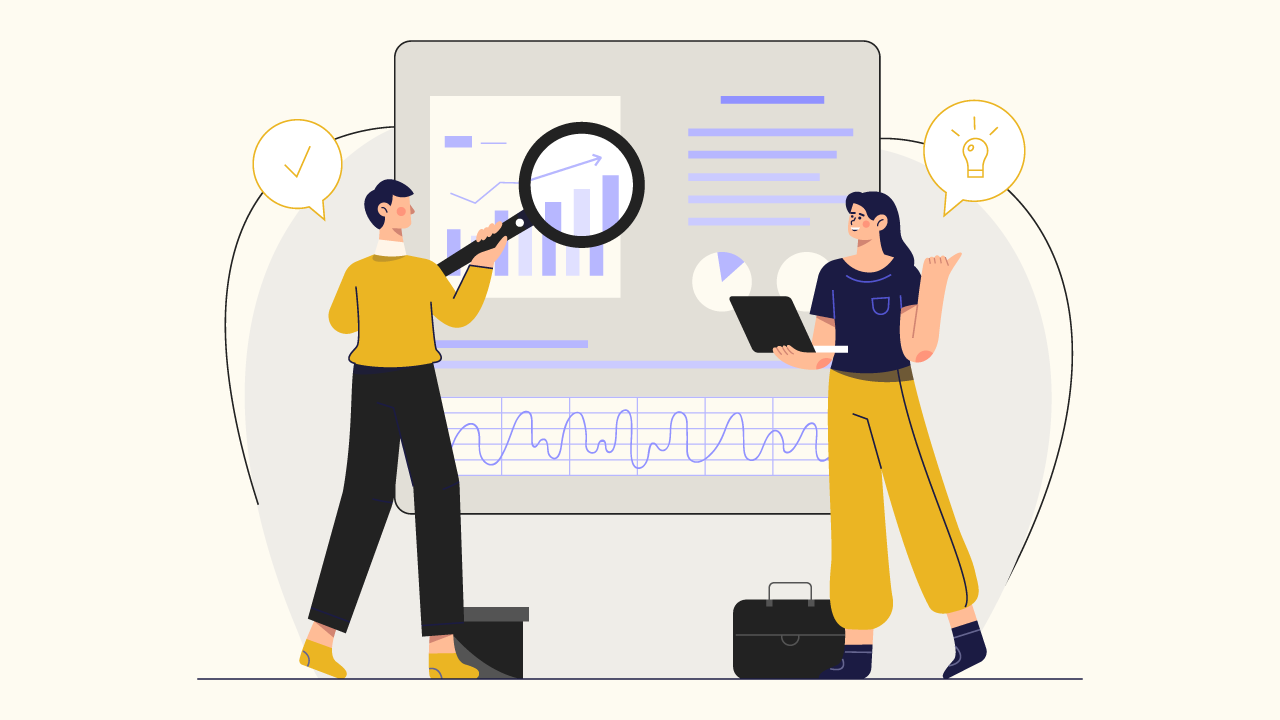
There’s more to a podcast case study than identifying the right guests and finding the best storytelling structure. Here are a few tips for recording a great B2B marketing case study that prospects will want to listen to and that will help you seal deals.
1. The Customer is Hero:
Yes, you are the host of the show, and the B2B case study is about your products and service. But you’re not the hero of the story. You’re just a supporting character. Your company’s role is to lend a helping hand to the real hero – your guest customer.
The idea behind this approach is to create a narrative where your listeners can visualize themselves as the protagonist of the podcast case study. No one wants to hear you boast about how good you are. They want to know how well you can solve your problems.
2. Ensure it’s Purpose-Driven:
B2B case studies are fundamentally meant to educate. For this reason, they should be purpose-driven. The language should be realistic and concise. The content should be to the point. But this being a podcast episode, you can sprinkle a few entertaining elements based on your show’s unique characteristics.
3. Make it Easy to Follow:
People tend to choose the path of least resistance. A podcast case study is not different. If the conversation takes too long to get to the point or the content is unclear, you will lose your listener’s attention. Ensure the information is easy to digest and the flow is seamless. Less is more. Aim for simplicity. And don’t be too technical.
4. Make the Podcast Case Study Interesting:
You love your favorite movie or book because the creators purposively designed it to be compelling. Most captivating stories include the use of a hook, conflict/trials faced by the protagonist, and a payoff. Then bring this all together with the element of emotion to engage the listeners. Feel free to use sound effects appropriately.
5. Don’t Lose Sight of the Target Audience:
When crafting or breaking down the success story, ALWAYS keep the ideal buyer in mind. Put yourself in their shoes and make the story as objective and compelling as possible.
Ready to Create a Podcast Case Study?
A podcast case study can be the perfect content to speak directly to your ideal customers. It can be a potent lead generation and conversion tool when well implemented.
People are receptive when you lay down exactly what you can do for them. And a podcast case study is the perfect way to showcase a success story that actually happened.
So create something they can relate to—and chances are you’ll see tangible results for your efforts. We hope this guide proves helpful in your quest for improved lead generation and conversion. All the best!
Don’t know where to begin? Get started with our free B2B Podcasting course.
FREE EMAIL COURSE
B2B Podcasting Mastered
Learn how to launch a revenue generating podcast for your business in just 10 minutes a day, for 2 weeks.

